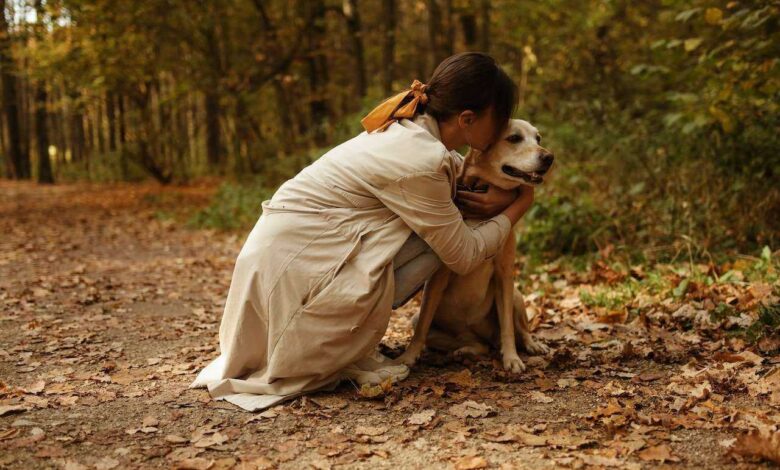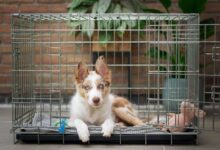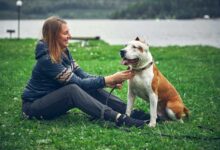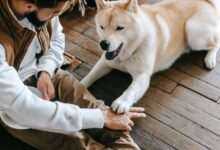Leash Reactivity in Dogs: Strategies for a Calmer Walk

Is your daily dog walk a frustrating battle of pulling, barking, and lunging? Leash reactivity, a common behavioral issue among dogs, can turn a peaceful stroll into a stressful ordeal. But fear not, as this guide will equip you with strategies to transform your walks into enjoyable, harmonious experiences for both you and your furry friend.
Understanding Leash Reactivity
Leash reactivity is your dog’s over-the-top reaction to certain triggers, like other dogs, people, or even unfamiliar environments, while on a leash. To address this behavior effectively, it’s crucial to understand why it happens:
- Frustration: Dogs, being naturally curious and social, may feel frustrated when the leash prevents them from approaching or interacting with what piques their interest.
- Anxiety: Fear or anxiety can trigger reactive behavior, especially when encountering new or unfamiliar stimuli during walks.
- Lack of Socialization: A lack of early exposure to various people, animals, and environments can result in overreactions when your dog faces new situations.
Strategies for a Calmer Walk
Let’s dive into practical strategies that can help you manage leash reactivity:
1. Positive Reinforcement Training
Positive reinforcement is a powerful tool for reshaping your dog’s behavior:
Reward Desired Behavior: Use tasty treats, verbal praise, or toys to reward your dog for calm, non-reactive behavior during walks. Encourage them to focus on you rather than external stimuli.
Counterconditioning: Gradually expose your dog to their triggers from a safe distance. Reward them for remaining calm. Over time, reduce the distance between your dog and the trigger to foster positive associations.
2. Teach Alternative Behaviors
Empower your dog with alternative responses to triggers:
Train Basic Commands: Commands like “sit,” “stay,” and “leave it” can provide structured ways for your dog to respond to stimuli.
Use Diversion: When you notice your dog becoming reactive, instruct them to perform a command like “sit” or “focus.” This redirects their attention and reinforces calm behavior.
3. Manage Your Dog’s Environment
Controlling your dog’s environment can be an effective preventive measure:
Choose Quiet Routes: Opt for less crowded or noisy walking routes, especially when initially addressing leash reactivity.
Control Trigger Exposure: If your dog reacts strongly to specific triggers, adjust your walking routes or times to minimize their exposure.
4. Desensitization and Counterconditioning
Gradual exposure to triggers can help your dog adapt:
Gradual Exposure: Begin by introducing your dog to triggers from a distance where they remain calm. Reward them for their calm behavior. Over multiple sessions, gradually decrease the distance to the trigger.
Pair Triggers with Rewards: When your dog encounters a trigger, offer treats or praise immediately. This creates positive associations with the trigger.
5. Consistency is Key
Consistency is paramount to success:
Regular Training: Consistently practice training methods and routines to reinforce desired behaviors.
Patience: Recognize that progress may be gradual, and setbacks can occur. Patience and persistence are crucial.
6. Seek Professional Help
Don’t hesitate to seek professional guidance if needed:
Consult a Trainer: If leash reactivity persists or worsens, consider enlisting the help of a professional dog trainer or behaviorist who specializes in reactivity issues.
7. Consider Tools and Aids
Certain tools and aids can assist in managing leash reactivity:
Front-Clip Harness: These harnesses help reduce pulling and offer better control during walks.
Head Collar or Halti: These devices redirect a strong puller’s head, making it easier for you to guide them.
Muzzle: If your dog’s reactivity includes aggression, a well-fitted muzzle ensures safety for both your dog and others during walks.
Leash Reactivity in Dogs
Dealing with leash reactivity in dogs may seem daunting, but with patience, consistent training, and the right strategies, you can transform your walks into enjoyable, peaceful experiences. Remember that each dog is unique, and progress may take time. Stay persistent, seek professional guidance if necessary, and most importantly, savor the journey of helping your dog conquer leash reactivity for a happier and more harmonious walking experience.








